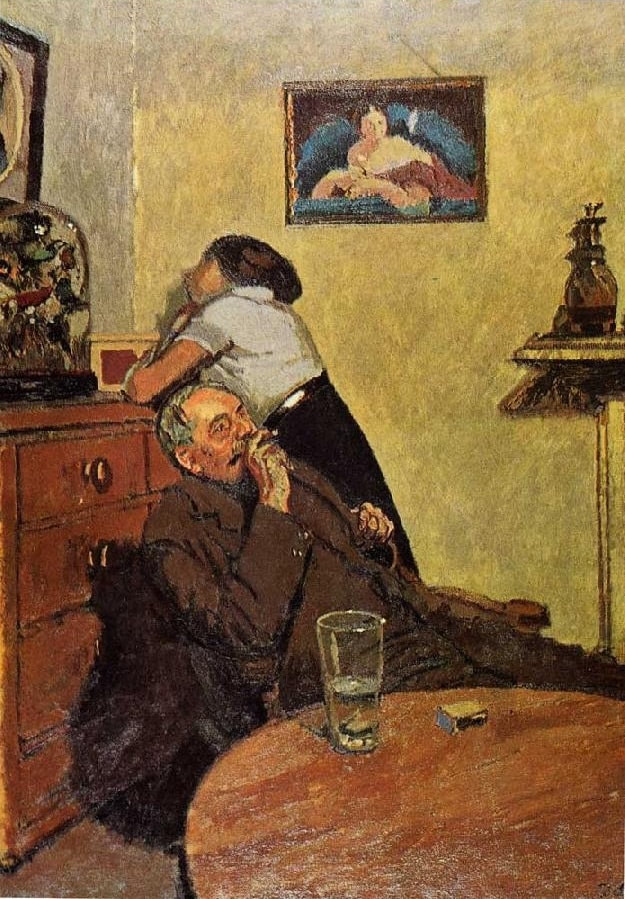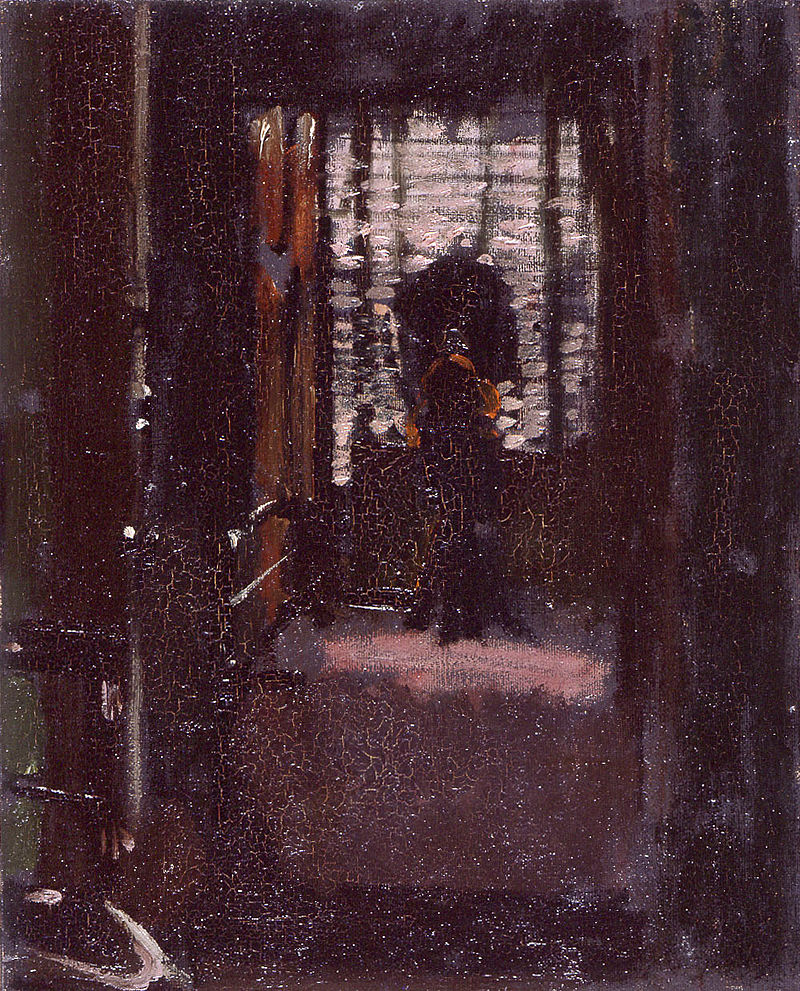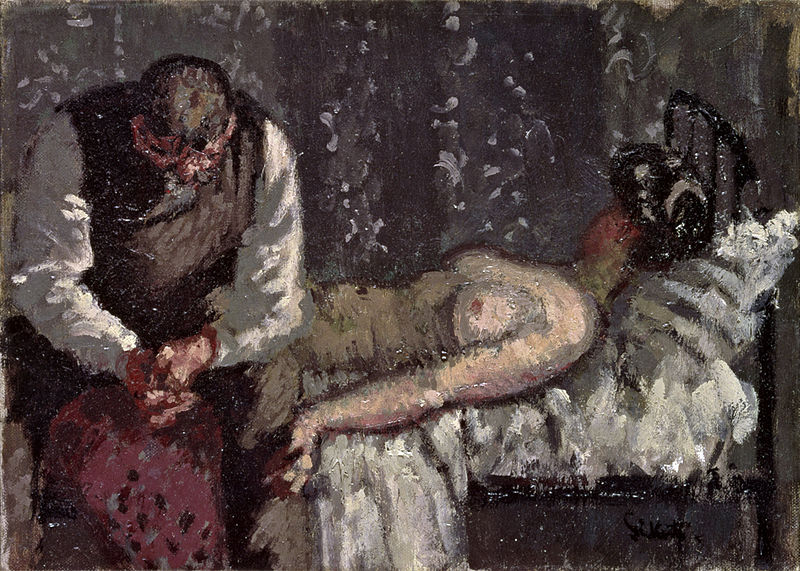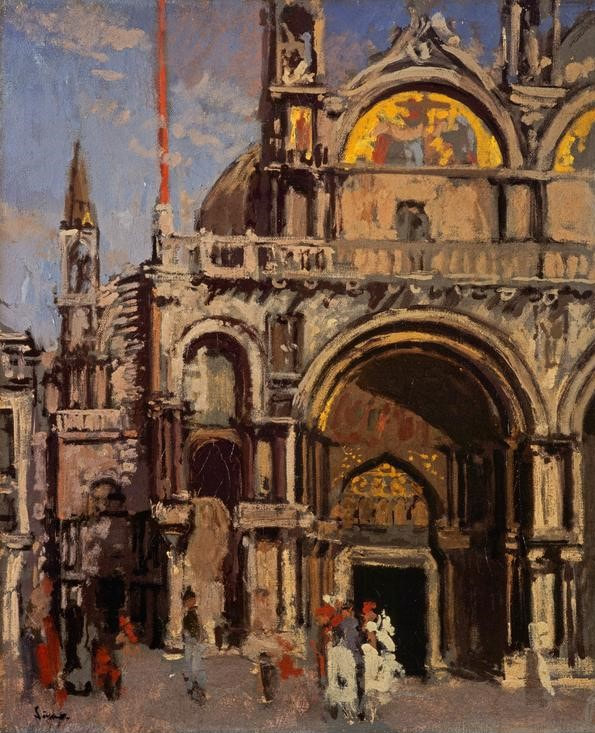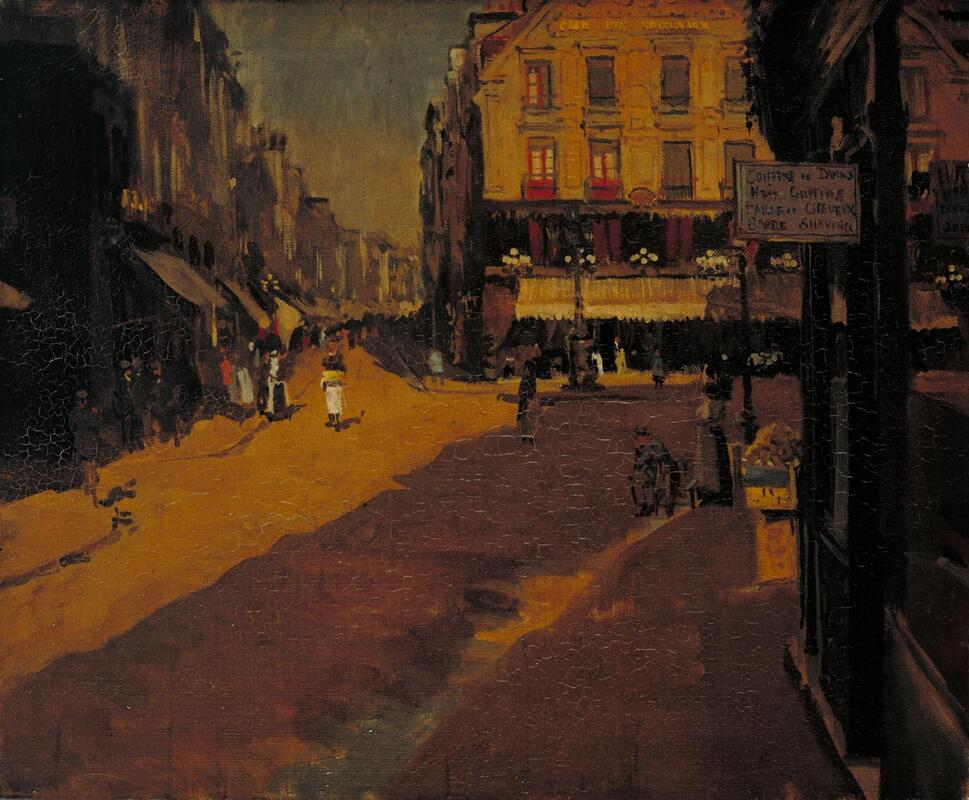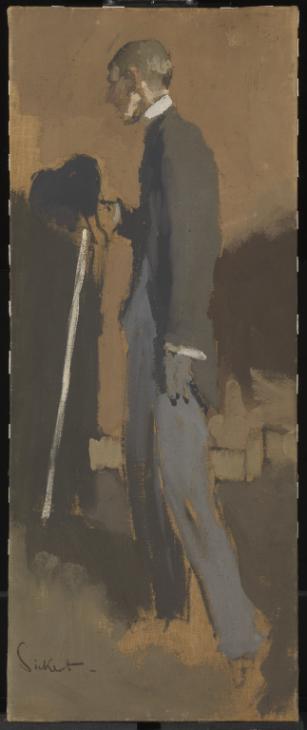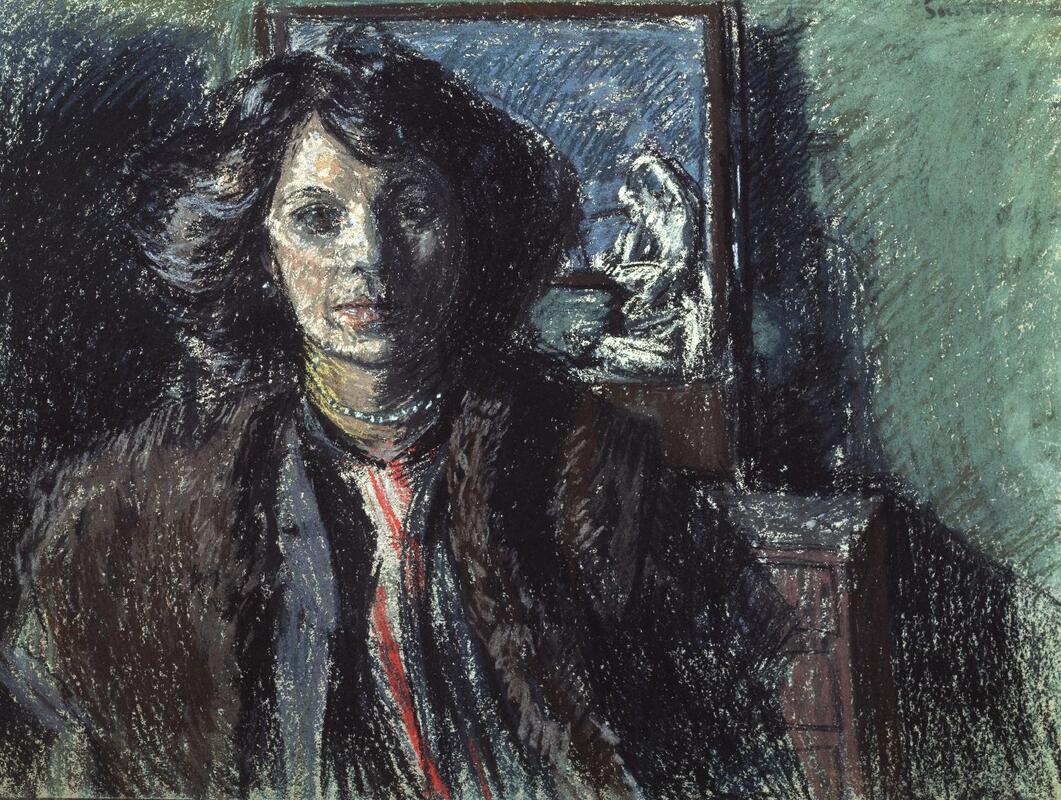An Appreciation: Walter Richard Sickert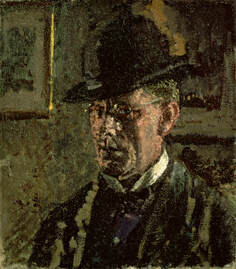 Walter Richard Sickert self-portrait Walter Richard Sickert self-portrait
Walter Richard Sickert was a British artist in the late 19th century and early 20th century. Often referred to as a Post-Impressionist, he created his own brand of Post-Impressionism under the direct influence of James Abbott McNeill Whistler and of Edgar Degas.
Sickert was born in Munich in 1860. His father Oswald was an artist of Danish-German ancestry. His mother Eleanor Louisa was the Anglo-Irish illegitamte daughter of the astronomer Richard Sheepshanks. During the boy's early years, the family moved around Western Europe in hopes of promoting Oswald's art work. In 1868, they settled in London. Richard, as he preferred to be called, was interested in art. However, Oswald dissuaded him from following in his and his grandfather's footsteps. Therefore, Richard decided to pursue a career in the theater. He played a few minor parts in Sir Henry Irving's touring company but when it became clear that he would not make the grade as an actor, Richard set his sights on becoming an artist. In order to do this, Sickert enrolled at the prestigious Slade School of Art in London. However, Sickert's plans changed after meeting Whistler, the American artist who had become a London celebrity. Whistler advised Sickert that he was wasting his time going to art school and that a much better career path would be to become Whistler's studio assistant and pupil. Sickert agreed and went to work for Whistler. The young artist soon developed an artistic style reminiscent of Whistler's based on plein air painting. Whistler planned to exhibit his painting “Portrait of the Artist's Mother in Grey and Black” at the Paris Salon of 1883 but did not want to take the painting there himself. Instead, he entrusted the mission to Sickert. He also furnished Sickert with letters of introduction to Whistler's friends Edourad Manet and Edgar Degas. Manet was too ill to receive Sickert but he was welcomed by Degas. Although Degas was a leading Impressionist, he did not favor plein air painting. Instead, he advised Sickert to paint in the studio based upon drawings and his memory. Sickert was very impressed with Degas and adopted his approach and much of his technique. In 1885, Sickert married Ellen Cobden, the daughter of a Liberal Party politician. The couple spent the summer traveling around Europe including stops in Dieppe and in Venice. Sickert was so taken with these places that he returned again and again throughout his life. Returning to London, Sickert joined the New English Art Club, a society created as an alternative to the Royal Academy, by a group of French-influenced avant garde artists Sickert participated in their exhibits. Following in his mentor Degas' footsteps, Sickert turned to depicting night life in his paintings. His 1888 “Katie Lawrence at Gatti's” attracted attention but was controversial as female singers performing in a nightclub was considered a vulgar subject in Victorian London. Nonetheless, Sickert would return to this subject many times during the course of his career. At the same time, he also painted landscapes and domestic scenes. He was soon recognized as an important young artist. During his career, Sickert also did occasional portraits. These included the rich and famous of the day including Aubrey Beardsley and Winston Churchill, who became a good friend after Sickert did his portrait. Sickert had an interest in life in the less glamorous areas of London. Therefore, he set up his studio in working class areas, first in Cumberland Market in the 1890s and later in 1905 in Camden Town. In the latter studio, he would host weekly gatherings of artists where they could show each other and discuss their work. These gatherings evolved into the Camden Town Group which included people such as August John, Lucien Pissarro, Spencer Gore, Harold Gilman, Charles Ginner and Robert Bevan . These artists were interested in depicting the lives of ordinary people, not in a judgmental way, but as realistic observations of their lives. The group only held together for a few years but Sickert exhibited in all three of their exhibitions. Somewhat disturbing is Sickert's interest in the darker side of late-Victorian and Edwardian London. For example, his interest in the Jack the Ripper murders led him to paint a picture of a room in a boarding house rumored to be the Ripper's bedroom. This interest made his contemporaries uneasy and in the 20th century, led to speculation that Sickert was the Ripper. Although such speculation has been dismissed as fantasy, it still has its adherents. Along the same lines, in 1907, there was a sensational murder in Camden Town in which a prostitute was murdered by her lover. The case received much prurient attention in the press. In response, Sickert exhibited four paintings with titles relating to the murder. These works were not depictions of violence but did contain nudity. Inasmuch as three of the paintings had been exhibited before the murder with different titles, Sickert appears to have been challenging convention by giving the works new names relating to the murder. Of course, he could also have been trying to capitalize on the publicity. In 1911, Sickert married his second wife Christine Angus. His first wife had divorced him on the grounds of his adultery. During World War I, Sickert was unable to take his usual summer holiday in Dieppe so he explored alternatives in England including Brighton and Bath. After the war, Sickert settled in France at Envermu. However, following Christine's death in 1920, he returned to London and set up a studio in Islington. Sickert then built a new life. In his work, he continued to explore the same subjects but shifted from relying on drawings as the basis for his paintings to photographs including newspaper photos. He stopped using his first name in favor of his middle name. He received recognition from the establishment art world when he was elected an Associate of the Royal Academy in 1924 and a full Academician in 1934. He also married for the third time in 1926; this time to artist Therese Lesssore. In 1941, the National Gallery in London held a one-man show of Sickert's works. He died in 1942 in Bath. Throughout his career, Sickert was also a writer and art critic. In addition, he taught from time-to-time at schools such as the Slade School, the Royal Academy Schools and the Westminster School of Art as well as at a number of art schools that he founded. |
Above: Perhaps the best-known of Sickert's works, "The Ennui."
Sickert's interest in the darker side of life surfaced in "The Bedroom Of Jack The Ripper" (above) and "The Camden Town Murder" (below). The latter picture was originally titled "What Will We Do About The Rent" and related to the proble of unemployment in London.
Sickert was fond of both Venice and Deppe and painted numerous scenes of them. Above: "A Corner of St. Mark's, Venice". Below: "Cafe des Tribunaux, Dieppe."
|
Artist appreciation - Walter Richard Sickert
